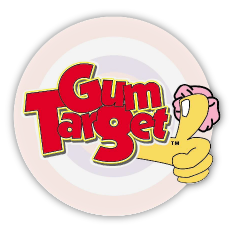Chewing gum is made from polymers, which are synthetic rubbers designed to maintain their chewy texture and resist decomposition. This makes them a persistent environmental problem as they do not biodegrade easily. Gum waste is often improperly disposed of, adding to the mammoth task faced by urban cleaning services. Innovative minds across the globe have started to address this issue by creating recycling programs aimed at giving gum waste a second life.
Gumdrop Ltd
Gumdrop Ltd was founded by determined environmental entrepreneur Anna Bullus with the sole purpose of addressing the often overlooked problem of gum litter. She aimed to create a circular economy for gum waste, giving it a new life in various intriguing forms.
It started with the Gumdrop Bin, a specially designed, bright pink bin dedicated to the collection of discarded chewing gum. These bins are strategic in their visual appeal, prompting proper disposal of gum. The idea was to make it easy and engaging for people to start treating gum waste just like any other recyclable material.
The collected gum is subjected to a specialized treatment process where it is cleaned and broken down. It is then compounded into a new material known as Gum-Tec®. Gum-Tec® acts as a versatile raw material that can be molded and used just like traditional synthetic rubbers and plastics.
Gumdrop Ltd’s range extends from consumer goods such as reusable coffee cups and phone covers to more industrial applications like doorstops and guitar picks.
By collaborating with schools, businesses, and various institutions, Gumdrop Ltd has been successful in spreading awareness and fostering behavioral change when it comes to gum disposal. They’ve shown that the transformation of gum waste is about changing perceptions and habits.
By diverting gum from landfills and urban landscapes, Gumdrop Ltd helps reduce environmental pollution. The company’s efforts aid in the conservation of urban cleanliness, prevent wildlife harm and limit additional costs and labor associated with cleaning gum litter.
Sneakers from Spent Gum
The resultant rubber from recycled gum provides a base for creating the soles of sneakers. Designers work with this unique material, blending it with other eco-friendly components to craft shoes that are as fashionable as they are environmentally conscious. These sneakers offer comfort and longevity, rivaling conventional footwear.
Sneakers made from recycled gum have a distinct advantage over traditional sneakers in terms of ecological impact. By using waste gum, these sneakers divert a significant amount of non-biodegradable material from the environment. The reduction in the use of virgin plastics and rubber in the production of soles contributes to the conservation of resources and a decrease in greenhouse gas emissions.
Consumers are increasingly interested in sustainable products and are willing to support brands that demonstrate environmental responsibility. The companies involved in producing sneakers from spent gum aim to inspire change in the industry and among consumers.
The initiative to produce sneakers from recycled chewing gum brings awareness to the potential of recycling programs and the positive impact they can have when innovative thinking and environmental concerns come together.
 A New Horizon for Packaging
A New Horizon for Packaging
Chewing gum, with its durable and flexible properties, offers a unique opportunity in packaging space. Once viewed as a disposal challenge, chewing gum is now seen as a valuable resource when processed correctly.
Collected gum waste is cleaned and broken down through a proprietary process that turns it into a pliable and moldable compound. This new material can then be shaped into various forms of packaging solutions that are both practical and innovative.
By reprocessing a material that would otherwise contribute to litter and pollution, businesses can significantly lower their environmental impact. Recycled gum packaging can provide a sustainable alternative to certain plastics and other materials that are not as readily biodegradable or recyclable.
Consumers are becoming increasingly aware of their ecological footprints and are demanding more from the products they purchase, including responsible packaging. Manufacturers and brands that opt for gum-based packaging can meet this demand.
Recycled gum can be engineered to meet various packaging needs, from simple wrappers to more complex structures. The versatility of the material, coupled with a growing interest in sustainable production, means that the potential for gum-based packaging is only beginning to be tapped into.
Companies can incorporate this recycled material into their packaging strategies, reinforcing their commitment to sustainability. Consumers can play a necessary role by supporting brands that utilize such innovative materials and by disposing of chewing gum responsibly to facilitate recycling efforts.
Sculptures and Installations
Artists have begun to harness the pliable and colorful properties of gum to produce artwork that is rich in narrative. These sculptures and installations often serve as an educational tool, sensitizing the public to the importance of recycling and waste management.
Creating art from recycled chewing gum involves intricate processes. The initial stage is much like any recycling endeavor—collecting and purifying the gum. Artists then engage in the artistic process, utilizing the malleable nature of the recycled material to shape and construct their envisioned pieces.
Recycled gum sculptures come in various sizes and forms, each making a bold statement on environmental issues. Artists focus on the material’s transformation from waste to wonder, creating sculptures that prompt viewers to reconsider their views on disposable materials and the possibilities of repurposing what is traditionally seen as trash.
Some artists create larger installations using recycled gum. These installations can be interactive, inviting viewers to engage with the artwork and its environmental messages. By directly involving the audience, these pieces encourage personal reflection on the viewer’s own consumption habits and disposal practices.
Public art has the unique capability to reach a diverse audience, and sculptures and installations made from recycled gum can thus have a widespread impact. Art can bridge the gap between knowledge and action, moving individuals from awareness to behavior change. As more people encounter these artistic representations of recycled waste, the message of sustainable living can spread effectively.
Artists who focus on eco-friendly themes frequently partner with environmental organizations to give their sculptures and installations a platform. These collaborations increase the visibility of their work and reinforce the educational aspect of their art. They can provide organizations with a novel method of promoting their environmental campaigns.



